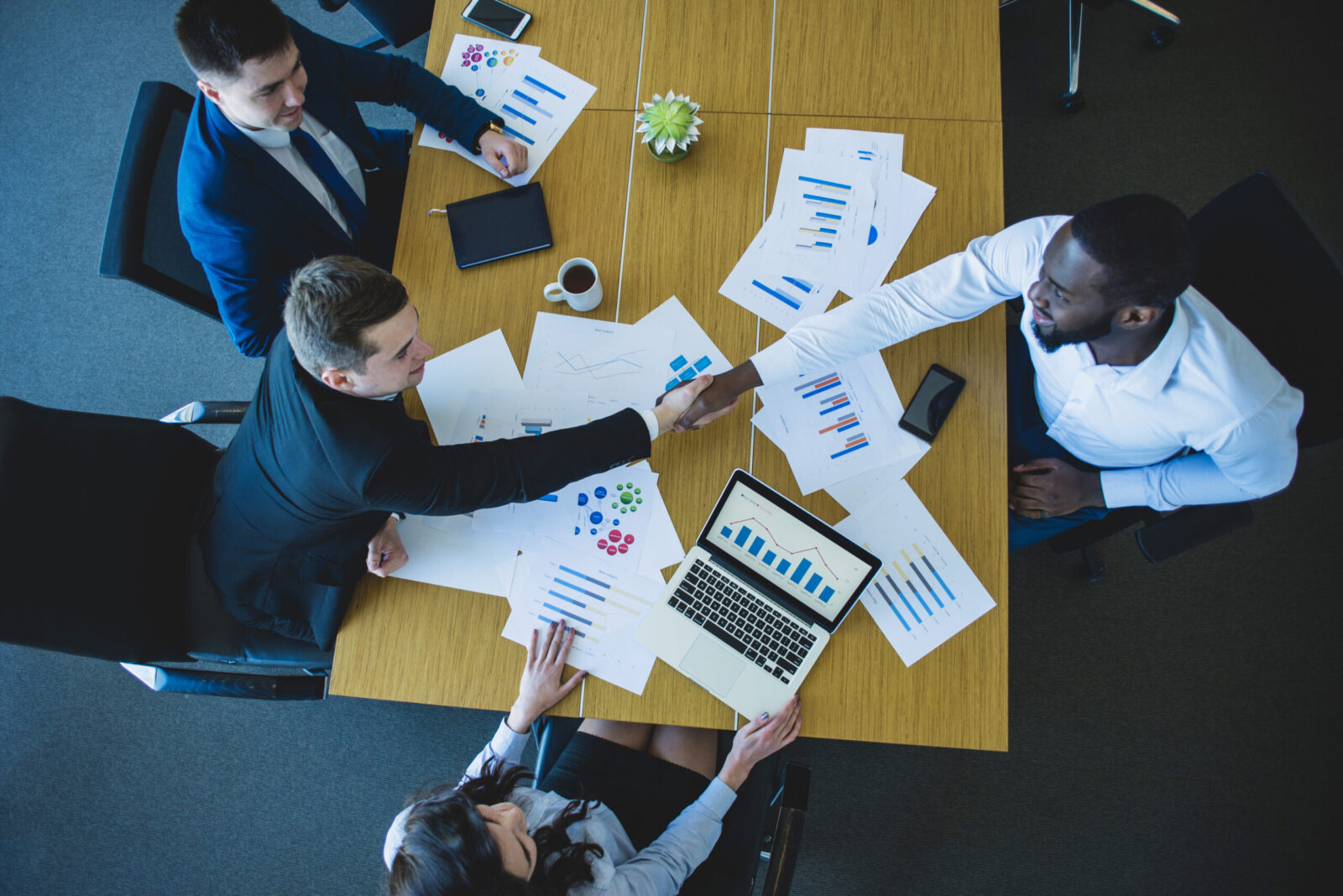
Supplier Verification: Key to Ensuring Quality and Reliability
Introduction In the ever-evolving landscape of small and medium-sized businesses (SMBs), ensuring a reliable and high-quality supply chain is paramount...

Get 20€ off on your first order!
Effective supplier management is crucial for maintaining a robust and efficient supply chain. Despite its importance, many companies manage supplier relationships haphazardly, leading to potential risks and missed opportunities. Implementing best practices in supplier management can enhance vendor relationships, optimize procurement processes, and align suppliers with business goals. By focusing on strategic supplier management, businesses can ensure that their vendors not only meet contractual obligations but also contribute positively to their overall success.
Align supply chain and business goals to transform procurement. Your supplier management approach should reflect these aims.
By supporting company goals, you guarantee procurement activities aren’t forgotten. You can help your business achieve goals faster.
You should have vendor selection criteria. You’ll collaborate with firms that share your aims. You need to know they’ll support your aims and give you the greatest value for goods and services.
You should consider their cost, quality, reputation, industry recognition, reviews, etc.
Though vital, cost shouldn’t be the only issue. Focussing too much on pricing might lead to suppliers with expensive delays, substandard products, and unsafe practices.
The service level agreement ensures suppliers meet expectations. You cannot rely on word-of-mouth contract changes. Legally problematic and complicates vendor relations.
Instead, write out the task scope and expectations. So you may review the paper and compare performance to agreed-upon parameters.
Your vendors should know your expectations and how to cooperate with you. A robust onboarding process that encompasses your rules and processes will prepare suppliers to work with you.
This should ease their concerns so they can start.
Vendor tracking is difficult. Larger businesses have more relationships to maintain. Luckily, self-service portals simplify this.
Instead of manually entering data into spreadsheets and searching for it afterward, flip the script.
With self-service vendor portals, suppliers may post their own information, connect with you, submit bills, track deliveries, ask enquiries, and more.
Managing various vendors requires centralised communication. Email is excessively disorganised. Critical communications often get lost.
Their information is freely accessible and comparable in these platforms. You may easily assess your supplier ties. You may monitor underperforming vendors, praise good ones, and rapidly compare suppliers to rivals.
Best of all, it doesn’t require a $7-figure turnkey software solution.
Low-code lets you establish a custom vendor portal in a fraction of the time and expense typical firms spend on software development.
Our case studies show how we’ve assisted clients with vendor portals.
Your vendor portal simplifies many supplier management tasks. It’s not the only automatable place. You may spend more time on vendor relationships and strategic work by automating other procurement tasks.
Using spreadsheets to track bills, supplier data, and procurement insights is outdated. All aspects of procurement may be automated, from RFP to billing to inventory management.
Give your vendors every chance to succeed. Performance monitoring is part of that. Use the contract and prior performance to provide them feedback and help to succeed.
You should know account performance KPIs. These KPIs should support your company and procurement goals. KPIs measure vendor value and discover issues promptly.
Not catching them doing wrong. Communicating your expectations and organization’s needs is key.
All parties should profit.
A comprehensive performance history might also help you negotiate contract renewals.
Meeting or talking to suppliers regularly shows them your human side. Also, supplier management is relationship management. In-person or video conversation is better than emails or text because emails and text lose the human factor.
Discuss successes, difficulties, and obstacles at meetings. You may also check in with your vendor and enquire how you’re doing as a client or customer.
These possibilities allow you to work with vendors on new projects. You may assess their capacity to fulfil growing demand and exploit their experience by incorporating them in decision-making.
Even the finest vendor may fail. Now more than ever, supply chain challenges are unpredictable. You need backup strategies to minimise harm. In case of disruption, take these steps.
Minimising disruptions protects connections. Your business may continue and your main vendors can return when they can without feeling like they wrecked it.
Automation of many procurement procedures cleans data and frees up analysis time. This allows you to negotiate cost savings with suppliers.
Cost reduction, whether through market pricing analysis, vendor performance, or discount possibilities, may boost business success.
We can constantly develop, especially in leadership and intrapersonal abilities. Your supplier connections will improve if you can communicate, give honest criticism, and bargain. Leadership training helps strengthen vendor trust.
Successful vendor management has many amazing benefits. These should inspire your company to embrace supplier management best practices:
Adapt to Change Faster: Knowing your suppliers’ skills can help you adapt to market changes.
Better Vendor Performance: Tracking supplier performance versus contracts ensures they follow the conditions.
More Savings chances: Better vendor connections provide bulk purchase savings, early payments, shipping consolidation, and preferred customer status.
Proactively improving vendor flaws before they become serious issues increases efficiency.
Superior vendor connections improve communication and supplier-led innovation. Your providers will know your aims and how to assist them, boosting creativity.
Vendor Compliance: Many organisations have vendor compliance obligations. Perform frequent vendor evaluations to guarantee compliance.
Increased Supply Chain Transparency: See how many vendors you have, how they’re doing, and where they can improve.
Deeper Supply Chain Insights: Understanding your supply chain’s flaws lets you improve and uncover opportunities.
Risk Reduction: Verify your providers’ ethical and sustainable behaviour. Also, you can pivot rapidly during supply chain disruptions.
More Long-Term Relationships: Reduce vendor churn and develop long-term partnerships that benefit your organisation.
Set up a supply chain management system and follow best supplier management practices to reduce risk and expense. Most importantly, it simplifies difficult supplier management.
See our case studies below to see how we helped clients grow their businesses and receive amazing ROIs.
Adhering to best practices in supplier management offers numerous benefits, including cost savings, improved vendor performance, and enhanced supply chain efficiency. By aligning supplier management strategies with business objectives, automating routine tasks, and fostering strong communication, organizations can build resilient supplier relationships that drive long-term success. Embracing these practices will help businesses adapt to changes, improve operational efficiency, and achieve a competitive edge in the market. Investing in effective supplier management is essential for optimizing procurement and sustaining business growth.
Thank you! You've signed up for our newsletter.



















Introduction In the ever-evolving landscape of small and medium-sized businesses (SMBs), ensuring a reliable and high-quality supply chain is paramount...

Introduction: In today’s highly competitive business environment, cost reduction is a top priority for procurement professionals. However, achieving this goal...

Introduction: In today’s fast-paced manufacturing landscape, effective communication with suppliers is crucial for maintaining operational efficiency and meeting customer demands....

Introduction In the ever-evolving landscape of small and medium-sized businesses (SMBs), ensuring a reliable and high-quality supply chain is paramount...

Introduction: In today’s highly competitive business environment, cost reduction is a top priority for procurement professionals. However, achieving this goal...

Introduction: In today’s fast-paced manufacturing landscape, effective communication with suppliers is crucial for maintaining operational efficiency and meeting customer demands....
Get 20€ off on your first order!
Save 30% by buying directly from brands, and get an extra 10€ off orders over €100
Save 30% by buying directly form brands, and get an extra 10€ off orders over €100